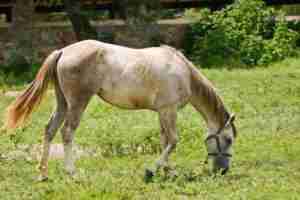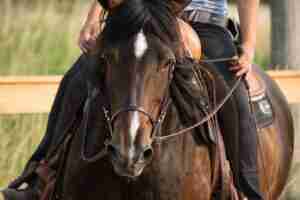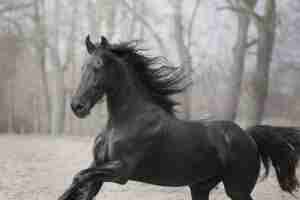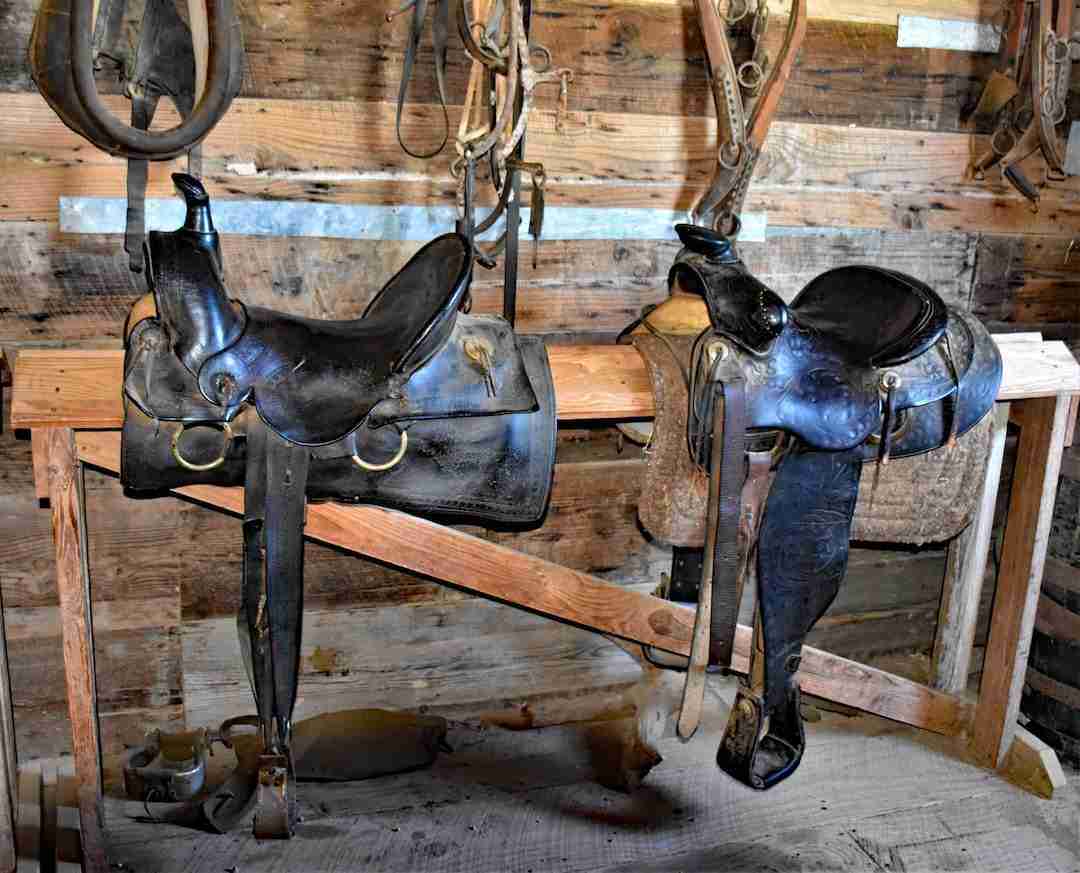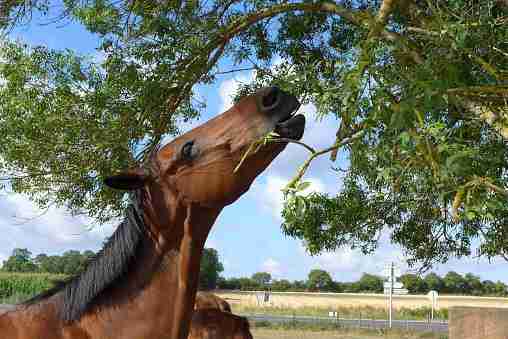Mexicans have an infinite love for their horses. A diverse country with rich cultures, dazzling beaches, incredible cuisine, and the beauty of the Azteca Horse, Mexico’s national horse, and the hardy little Galiceno Horse.
Mexico has two native horses. The Azteca horse was bred as Mexico’s national horse in 1972. The Galiceno horse from Spanish and Portuguese horse lineage was brought to Mexico by conquistadors in 1519 and became feral over the years but has now been considered a rare breed.
Charros are well known for their bravery, flair, and horsemanship. They needed Mexican horses that would encompass the same qualities. We look at the history and characteristics of the two native Mexican horses.
Azteca Horse
Don Antonio Ariza Cañadilla dreamed of creating a horse that would be the proud treasure of Mexic. So, he recruited the help of veterinarians and government officials to help make a horse that would become Mexico’s national horse.
History Of The Azteca Horse
The Aztec horse is a compilation of Andalusians, American Quarter Horse, and Mexican Criollo, the first horse developed by careful breeding in Mexico in 1972.
With Mexican horsemen in mind, the charros, a breeding program was set up to create a horse that embodied the characteristics of what would be Mexico’s national horse.
When the first offspring was born in 1972, the breeders association in Texcoco lake knew they had a horse of great nobility, grace, and beauty.
Casarejo was the first stallion bred from an Andalusian stallion, Ocultado, with an American Quarter Horse mare, Americana.
The breeding program was a success, and the first Associacion Mexicana de Criadores de Caballos de Raza Azteca (AMCCRA), or The Mexican Association of Aztec Horse Breeders, was established in 1974.
Most Azteca Horses are found in Mexico, with ten to fifteen thousand horses registered as of 2005 and around one thousand horses added yearly.
The American Azteca Horse International Association was formed in 1989. This American subcategory has allowed the Paint Horse breed to influence the Azteca horse. However, they do not incorporate the Mexican criollo bloodline. Therefore, this registry is not approved by the Mexican Association.
Characteristics That Make The Azteca Horse
The Azteca horse was developed for its athleticism, good temperament, and physical characteristics. It inherited its nobility, arrogance, and full mane and tail from the Andalusian horse. While the Aztec Horse gets its sweet demeanor, speed, and strength from the American Quarter Horse.
As per the Mexican Breed Registry, the breed can be any solid color, although grey is the most seen color. White markings on the face and lower legs are permitted, but no paint markings are allowed, except in the American Aztec Horse International Association.
Stallions stand at 15-16hh, with mares reaching between 14.3-16hh and weighing between 1000 to 1200 pounds.
The face has a straight to convex profile with a slightly arched neck that is thick at the base of insertion, becoming finer at the connection with the head. Manes are medium to long silky, and full.
Well-muscled with a broad chest and strong, wide-sloping shoulders. It has a relatively short, strong back, deep girth, and well-sprung ribs. Broad croup with low set tail with full silky hair.
Its limbs are strong and well poised with good proportioned and hardy hooves.
The Azteca horse has a free and mobile gait with natural engagement, lifting, and extension.
The breed must conform to strict phenotypes to allow the horse to be registered. Foals are inspected at seven months to be issued with a birth certificate and later at three years or more to be fully registered and approved for breeding.
The breed is judged on performance, movement, conformation, temperament, and appearance.
The offspring may have at most three-quarters of any of the founding bloodlines and at most half of the Criollo bloodline, which comes from Mexican mares.
Uses Of The Azteca Horse
Azteca horses are often used in western riding for reining, cutting, team penning, and roping. They are also known for bullfighting and have found a place in English riding in jumping and dressage.
 Galiceno Horse
Galiceno Horse
The Galiceno horse is an ancient breed from Iberian heritage. Ancestors to the Mustangs, these little horses are prized by Mexicans for their courage, agility, and intelligence.
History Of The Galiceno Horse
The Galiceno is a Spanish breed of horse that is thought to have come from Galicia province in North-western Spain. They were part of the first sixteen horses that landed in mainland America when Hernan Cortes invaded Mexico in 1519.
The Spaniards used them as pack horses and in the silver mines. They later moved northward with the Spanish missions, where Galiceno horses were often stolen by Indians. This introduced the Galiceno into the Mustang population and became a big part of the foundation of the Mustang breed that thrived on the great southwest plains.
Although they form part of the Mustang lineage, they never migrated northwards, remaining in the coastal regions of Mexico. In 1958 Harvey Mecom of Liberty, Texas, found the horse in Yucatan and imported hundreds back to the United States.
He found these little horses ideal as children’s horses due to their intelligence and friendly disposition.
In 1959 the Galiceno Horse Breeders Association (GHBA) was formed to record and preserve the breed. The breed thrived and grew to a population of seven thousand by 2005, with twenty new foals being registered yearly.
They were used to improve other breeds, but sadly the number of viable breeding Galiceno horses dropped in 2015. However, they are now considered critical, with fewer than two hundred horses left.
Characteristics That Make The Galiceno Horse
Although the Galiceno is small, reaching pony heights of 12-13.2hh, they are known for their sturdy build. They can carry adults up to two hundred pounds for an entire day’s trail ride without showing any signs of fatigue.
They have smooth gaits with long walking strides and a smooth jog and lop.
Galicenos are prized for their friendly disposition and willingness to please and interact with humans. In addition, they have immense stamina and courage with extreme agility, strength, and endurance.
They have refined straight to convex-shaped faces, small to medium ears, tips pointed inwards, and a slightly arched neck.
A narrow to medium chest with moderate withers that slope into a straight, short back. Their croup is not level and has a slight slope with a high tail position carried straight out when lopping.
Uses Of The Galiceno Horse
This little ancient breed is highly versatile and has been used in many different disciplines in western riding as well as English riding for dressage and jumping. In addition, they are ideal for trail rides and are readily used in pulling carts.
Conclusion
Mexican horses have a lot of Spanish and Portuguese influence in the breed. The Azteca Horse breed is the national horse possessing characteristics from the Spanish Andalusians and American Quarter Horse. While the Galiceno horse became feral before it was caught to become a working horse again with its pleasant personality and willingness to please.
Resources
https://www.americanazteca.com/about_aahia.html
https://www.fei.org/stories/lifestyle/my-equestrian-life/equestrian-nation-mexico
https://en.wikipedia.org/wiki/Azteca_horse#References
http://www.equiworld.net/breeds/azteca/index.htm
https://equisearch.com/articles/azteca-horse-breed/
https://en.wikipedia.org/wiki/Galiceno
https://imh.org/exhibits/past/breeds-of-the-world/north-america/azteca/
https://www.youtube.com/watch?v=22FkzNZAVUc&ab_channel=DiscoverTheHorse
https://livestockconservancy.org/heritage-breeds/heritage-breeds-list/galiceno/


